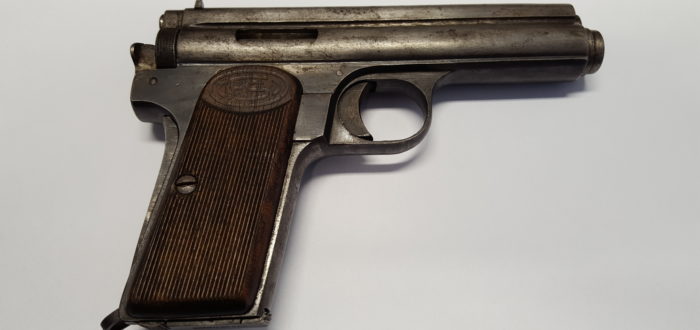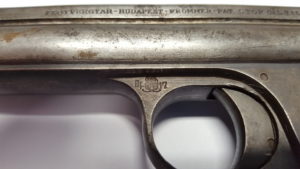Kristóf Nagy
Rudolf Frommer and his frequently unique firearms designs have been more or less forgotten today, but the impact of his work is still felt in our modern world. Born on 4 August 1868 in Budapest, Frommer was soon to be recognised as an energetic rising star in the Hungarian firearms industry. He did not choose to follow the typical educational path of a firearms designer; instead of becoming an engineer, he studied at the Budapest Academy of Economics before being hired by the Hitel Bank investment bank. As a portfolio manager, he was tasked with overseeing investments made by his employer. One of these was the bank’s loans to financially stabilise the firearms manufacturer Fegyver és Gépgyár, the predecessor of the later, state-run FÉG arms factory. As it turned out, Frommer’s financial management skills and the bank’s monetary support turned the Budapest based factory around, and helped place the once-struggling plant back on the path to success. With significant investments in machinery, accompanied by sustained high-level lobbying and political pressure applied by friendly politicians, Fegyver és Gépgyár became the second supplier of the Mannlicher 1895 rifle family to the broader Austro-Hungarian empire. Simultaneously, the company rose to become the second-largest arms manufacturer in the Monarchy—surpassed only by the Österreichische Steyr-Waffenfabrik.
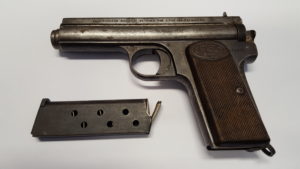
Figure 1.1 The Frommer Stop self-loading pistol with the magazine removed (source: Kristóf Nagy/ARES).
Soon it became obvious that Frommer was not only interested in the financial side of the business, but was also inspired by the designs of Georg Roth and Karel Krnka, whose designs were manufactured in the Budapest factory. Frommer began working on his own firearms designs, and Roth and Krnka’s influence would soon manifest itself in his first long-recoiling design, the Model 1901. Subsequently, his involvement with Fegyver és Gépgyár intensified in 1904, when he was appointed the commercial director of the company. His success in this role led the Austro-Hungarian Emperor to appoint him general manager of the plant in 1914. Frommer was involved in the design and development of more than 100 firearms-related patents over the course of an impressive career that lasted until his retirement, due to illness, in 1935. Rudolf Frommer—a man who was the key driver in the success of modern Hungarian firearms production and saw many designs he oversaw succeed on an international scale—died in Budapest less than a year later, on 1 September 1936.
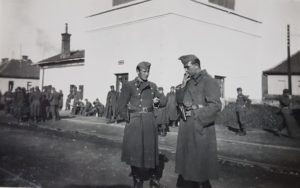
Figure 1.2 The author’s grandfather (at right) still carrying his personal Frommer Stop in 1943 (source: Nagy family collection).
Hungary’s First Modern Pistol
The Frommer Stop was the first self-loading pistol that was entirely designed and mass-produced in Hungary. Fielded in 1912 as the 12 M. pisztoly, it became the sole sidearm of all Hungarian armed services over time. But it was far from Rudolf Frommer’s first attempt at a self-loading pistol design. In 1901, Frommer applied for a patent for a handgun that would become the Model 1901. This design featured a fixed magazine inside the pistol grip, and had to be loaded via a charger (‘stripper clip’). Only a small pre-production series of 200 pistols was manufactured and, although these were internationally distributed for testing, it never generated enough interest to be adopted by any country.
After becoming the commercial director of the Budapest arsenal, Frommer continued to further develop his design and, in 1906, he unveiled his new pistol: based on the model 1901, but equipped with a detachable box magazine. This pistol was still not a commercial success, but Frommer persisted. Witnessing the delays and struggles associated with the somewhat ill-fated Roth-Steyr M1907 from a front-row seat, Frommer came to understand the path to a successful pistol would not necessarily be a short one. He persevered. The next iteration of his design was launched in 1910 (M1910) and the company received some orders for a Frommer pistol for the very first time—his Model of 1910 would be acquired by the Hungarian Csendörség (gendarmerie). On the basis of this order, Frommer optimised some aspects of the pistol, making changes to the grip and magazine angle to improve reliability and reduce manufacturing costs. But the most distinctive modification he introduced during this refinement phase was to place the recoil spring with its guide rod above the barrel, giving his pistol its unique appearance while reducing the overall length compared to the previous models. Finally, in 1911, the long-awaited breakthrough was achieved. Officially adopted as the Model 12 pistol, Frommer’s handgun became a long-standing item amongst Fegyver és Gépgyár’s offerings, manufactured in .32 ACP and .380 ACP. Besides governmental contracts, the pistol also saw remarkable success in the civilian market. Especially popular was the shorter version, known as the Frommer Baby.
After 1914, the war effort took centre-stage throughout public life in the Empire. The Hungarian firearms manufacturing capacity grew accordingly. During the First World War, the factory received order totalling 200,500 Frommer Stop pistols. Before the end of the conflict, 140,230 of these were delivered. Firearms produced under this contract can easily be identified by the inspection stamping on the right-hand side of the trigger guard, which is marked with “BP” for Budapest, the royal Hungarian coat of arms or an Austro-Hungarian crest in the middle, a two digits indicating the year of production. After the war, the newly established Royal Hungarian Armed Forces adopted Rudolf Frommer’s design as the Model 19 service pistol and manufacturing continued. Besides the domestic demand, some export deals were struck. Even the polish military adopted the firearm as the pistolet frommer wz.1911, albeit in limited numbers. These pistols reached Poland amid the desperate fight of the Polish nation against the Red Army in 1920. Accompanied by a significant number of 95M rifles and appropriate ammunition, a couple of hundreds of Frommer Stop pistols reached Poland as part of an aid shipment sent by the Hungarian government.
The existing demand for self-defence pistols from before the War grew amongst the insecurity of the post-War era, and manufacturing of the compact Frommer Baby resumed to meet demand, continuing until 1929. Production of Frommer designs took place until late in the 1930s, however this was primarily to satisfy commercial sales, as the pistol was replaced in Hungarian military service in 1929 by another Frommer design, the 29 M (and, later, the 37 M sidearm). Due to its compact setup and wide availability on the civilian market, a number of Frommer Stop pistols saw service in the Second World War, often as personal pieces carried by officers.
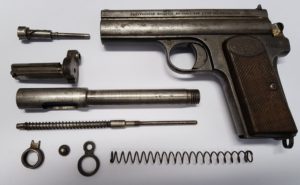
Figure 1.3 The Frommer Stop pistol field-stripped (source: Kristóf Nagy/ARES).
Technical Description
The Frommer Stop is a long-recoiling, locked-breech, hammer-fired self-loading handgun, as were its predecessors. However, the Stop differs from its progenitors in a distinctive way: the two springs needed for operation—the recoil spring and the breechblock spring—were moved to a separate housing on top of the barrel, significantly reducing the length of the firearm. Unlike most modern handguns, the Frommer stop features a rotating bolt with locking lugs and a cam facilitating the rotation. Once the pistol is fired, the barrel will move backwards together with the bolt. After reaching its most rearward position, both parts start to move forward under spring pressure. This simultaneous movement is interrupted by a notch engaging the cam of the breech, forcing the bolt head to rotate and unlock, and allowing the barrel to travel forward on its own. The breechblock will follow only after the ejector (located on the inner wall of the tubular frame attached to the barrel) has pushed out the spent cartridge case held in place by the extractor on the bolt head. This rather complicated design resulted in a very strong system that was able to handle significant pressure. Accordingly, Frommer developed his own cartridge, .32 Frommer, that is dimensionally almost identical to .32 ACP (7.65 × 17SR mm) and still uses a 40 grain bullet, but with an increased propellant charge. He also developed the 9 mm Frommer, which applies the same concept to the .380 ACP (9 × 17 mm) cartridge. These cartridges were designed to exploit the potential of the much stronger lock-up of the Frommer Stop, compared to contemporary blowback pistols in the same calibres.
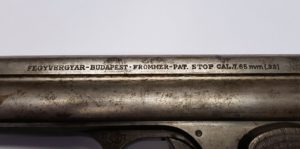
Figure 1.4 Factory and calibre markings on the spring tube (source: Kristóf Nagy/ARES).
The other features of the Frommer Stop are rather simple. The bolt has no hold-open device, and so is not locked in place once the last cartridge is fired. There is also no equivalent hold-open position that can be manually engaged for inspecting the chamber or to clear a malfunction. The pistol grip is nearly right-angled with an automatic spring-loaded grip safety on the backstrap, which blocks the trigger bar if not grasped. This is, however, the only external, and only user-operated safety on the pistol. The detachable box magazine holds either 8 rounds of .32 ACP or 7 rounds of .380 ACP, and can be released by engaging the magazine release located at the heel of the grip. The open sights are typical for the era, and rather delicate, but appear to be thinner than usual with a surprisingly big rear sight, that still has a remarkably narrow notch cut.
Figure 1.5 WWI proof mark on the top of the left-hand side of the trigger guard (source: Kristóf Nagy/ARES).
Disassembly
Before disassembly, the weapon must be unloaded. To remove the magazine, a latch on the bottom of the grip is pulled backwards. After checking the chamber of the weapon is clear, the bushing in the front of the firearm should be removed. In order to perform this operation, the plunger securing the bushing must be depressed to allow the hemispherical cut-out to be turned three times clockwise. The Frommer manuals suggest using a magazine to depress the plunger. This allows the firearm to be field stripped without additional tools. Once the bushing has been removed, it is critical to secure the plunge—failure to do so will result in its being projected at quite some force! The plunger and the recoil spring can now be extracted from the spring housing above the barrel. Next, the bushing is separated from the washer, this being shaped like a figure-eight, that is located between it and the spring housing when assembled. This washer doubles as a further disassembly tool, having a notch on the outside of the smaller rings which can be used to engage the blade-shaped end of the recoil spring guide rod and turn it 90 degrees in either direction. This releases spring pressure, allows for the bolt to be removed from the rear of the firearm. Another 90-degree turn of the guide rod allows it to be removed to the front of the recoil spring housing. Finally, the barrel can be pulled out of the rear of the firearm, concluding the field strip. Assembly should be conducted in a reverse manner. Disassembly and reassembly are identical with the Frommer Baby pistol.
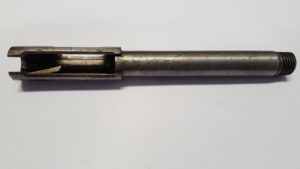
Figure 1.6 The ejector is visible at the back of the tubular frame attached to the barrel (source: Kristóf Nagy/ARES).
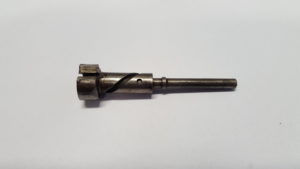
Figure 1.7 Side view of the bolt head with firing pin (source: Kristóf Nagy/ARES).
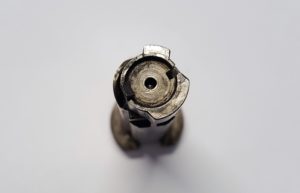
Figure 1.8 Frontal view of the bolt head, showing the locking lugs (source: Kristóf Nagy/ARES).
Conclusion
The Frommer Stop and its small brother the Baby paved the way for a series of successful Hungarian pistol designs manufactured by FÉG until the 1990s. Despite its substantial commercial success, it must be noted that the long-recoil design was, in retrospect, an overcomplicated and expensive-to-manufacture technical solution for a pistol firing a relatively mild loading. The lack of a slide, or rather bolt, catch add to the frustration of using a Frommer Stop today. Additionally, both available calibres were on the lower end of what was acceptable for military use, even in the First World War. This gap in respect of ballistic performance grew subsequently in the 1920s and 1930s as more modern designs were introduced. By the beginning of the second World War the Stop was hopelessly obsolete. Nonetheless, these significant limitations do not detract from the fact that Rudolf Frommer’s first mass-produced self-loading pistol remained very popular over several decades and is still a beloved classic of an otherwise bygone era.
Technical Specifications
Calibre: .32 ACP or .380 ACP
Length: 165 mm
Barrel length: 96 mm
Weight: 610 g
Magazine capacity: 8 rounds (.32 ACP); 7 rounds (.380 ACP)
V0: 280 m/s (.32 ACP); 250 m/s (.380 ACP)
Sources
Alfinito, Giuliano. 2015. ‘Frommer Stop Pisztoly’. Armi e Tiro, 2015:10.
Dombrády, Germuska. 2016. Kovács, Kovács: A Magyar Hadiipar Története. Budapest, Hungary: Zrínyi Kiadó.
Frommer Self-loading Pistol manual. 1925 (reprint). Budapest, Hungary: Pallas Nyomda.
Lockhoven, H.B. 1968. Frommer Pistols: Part I. Rodenkirchen, Germany: Verlag International Small Arms Publishers.
Sárközi, Gábor. 1988. A Fegyvergyár Története 1891-1948 in Tanulmányok. Budapest, Hungary: Múltjából 22.
Remember, all arms and munitions are dangerous. Treat all firearms as if they are loaded, and all munitions as if they are live, until you have personally confirmed otherwise. If you do not have specialist knowledge, never assume that arms or munitions are safe to handle until they have been inspected by a subject matter specialist. You should not approach, handle, move, operate, or modify arms and munitions unless explicitly trained to do so. If you encounter any unexploded ordnance (UXO) or explosive remnants of war (ERW), always remember the ‘ARMS’ acronym:
AVOID the area
RECORD all relevant information
MARK the area from a safe distance to warn others
SEEK assistance from the relevant authorities

